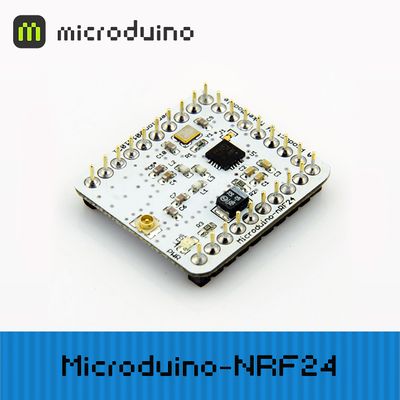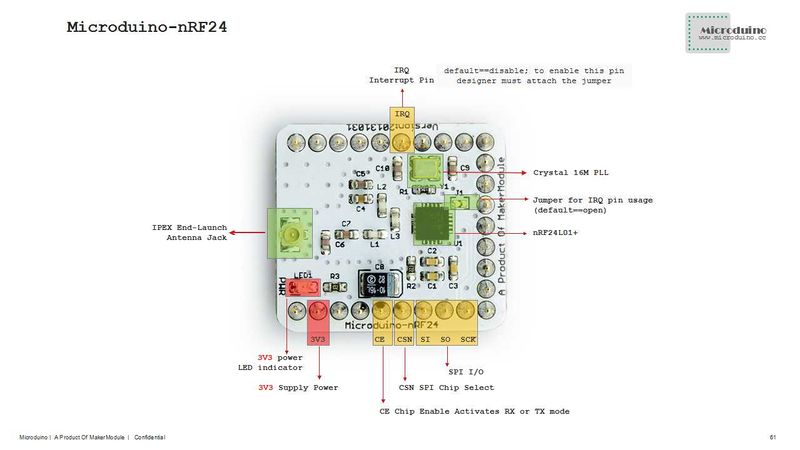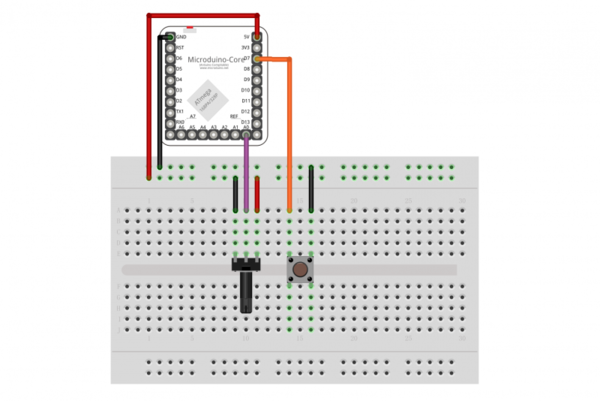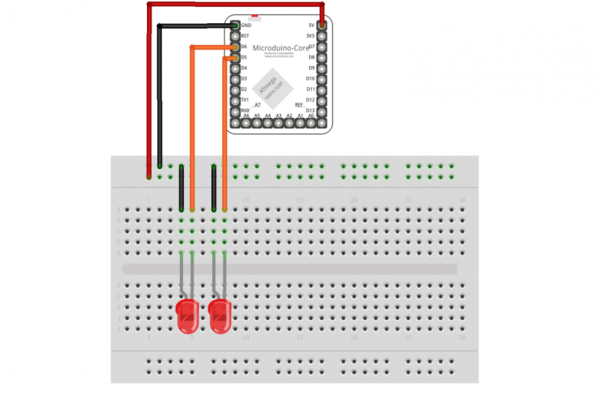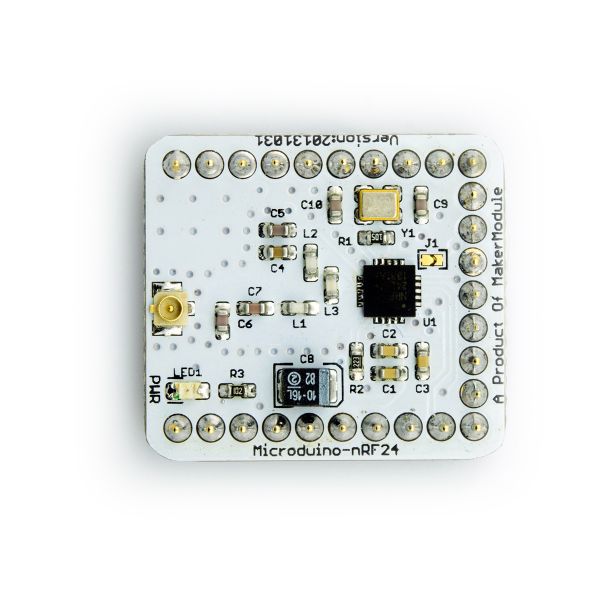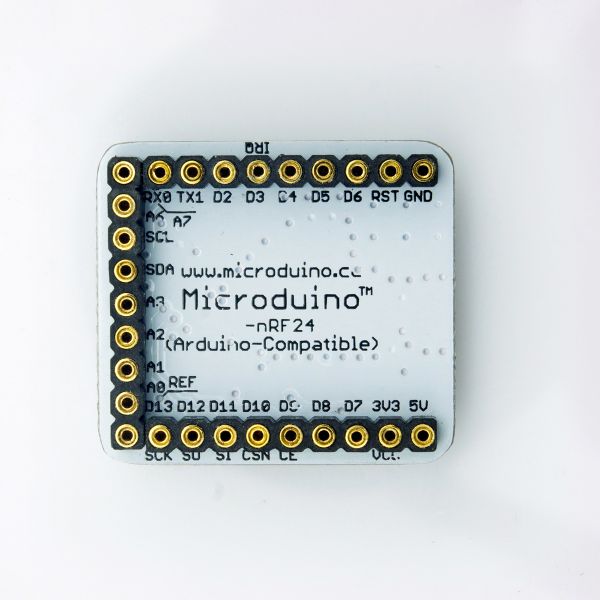Features
- Low apply cost, the link layer is fully integrated in the module, very easy to develop;
- Automatic retransmission function, automatic detection and resend the lost packets. Retransmission time and retransmission times can be controlled by software;
- Automatic store the packets that didn't received response signal;
- Automatic reply function, after receipt of a valid data, module will send response signal automatically, no need programming again;
- Set six receiving channel address at the same time and selectively open the receiver channel;
- Standard pin 2.54 MM spacing interface, convenient for embedded application;
- Small, cheap, stackable and open;
- Open source hardware circuit design, compatible with the Arduino IDE development environment for programming;
- Define unified interface Microduino specification and contain rich peripheral modules. Set up the quick connection with other Microduino modules and sensors easily and flexibly.
- 2.54 pitch row female connector for easy integration into breadboard.
Specification
- Global opened 2.4 GHz ISM band, the maximum 0 DBM transmission power, free license to use;
- Low working voltage: 1.9 ~ 3.6V low voltage;
- SMA antenna, easy to replace;
- Support six channels data reception;
- High rate: 2 MBPS, due to the air transport time is very short, greatly reduce the collision phenomenon in the wireless transmission (software set 2 MBPS or 256 KBPS, 1 MBPS air transmission rate);
- Multi-frequency points: 125 frequency points, support the requirements of multipoint communication and frequency hopping communication;
- Low power consumption: when work in answer mode communication, fast air transport and the startup time, greatly reduce the current consumption.
Pin Description
| NRF24L01 Pin |
Microduino Pin |
Function
|
| SCK |
D13 |
SPI bus clock
|
| SI |
D12 |
Data input pin
|
| SO |
D11 |
Data output pin
|
| CSN |
D10 |
SPI Chip-select signal (Defined in program)
|
| CE |
D9 |
RX or TX Mode selection (Defined in program)
|
Document
Eagle PCB File:Microduino-nRF24.zip
Main Components
Development
Arduino library and support package
- Use RF24 library, refer to RF24 library file and RF24Network library file:
Application
Download Program
Test Program:File:Program Test NRF.zip
Two Microduino core communicate via Nrf24
- Prepared hardware:Microduino FT232R, Microduino Core*2, Microduino Nrf24*2;
- Prepared software:Microduino example program (Arduino part), Arduino IDE(1.0 release and upper), RF24 library, RF24Network library;
- Copy the downlaoded library to libraries folod of Arduino IDE;
- Start Arduino IED, open Microduino example program, select board "Microduino Core (Atmega328P@16M,5V)", download directly;
- The sending and receiving wiring picture:
- Observation
- Sending end can control receiving end's LED by button.
- Sending end potentiometer can control the lightness of LED for receiving end.
FQA
- Does this module have the antenna?
- How does the Auto Acknowledge & Auto Re-Transmit work? Finished by software or hardware?
- Automatic retransmission function, automatic detection and resend the lost packets. Retransmission time and retransmission times can be controlled by software;
- Automatic store the packets that didn't received response signal;
- Automatic reply function, after receipt of a valid data, module will send response signal automatically, no need programming again;
- Does this module support the voltage convert from 5V to 3.3V?
- Core and Core+ module doesn’t support this voltage conversion and it can be finished by stacking BM, FT232, DUO and UNO module.
- How to control this module running in low power consumption mode or close it directly?
- You use the function pwerDwon() that Arduino library provided.
- What's the work range of this module?
Bug
History
Picture
Video
|
